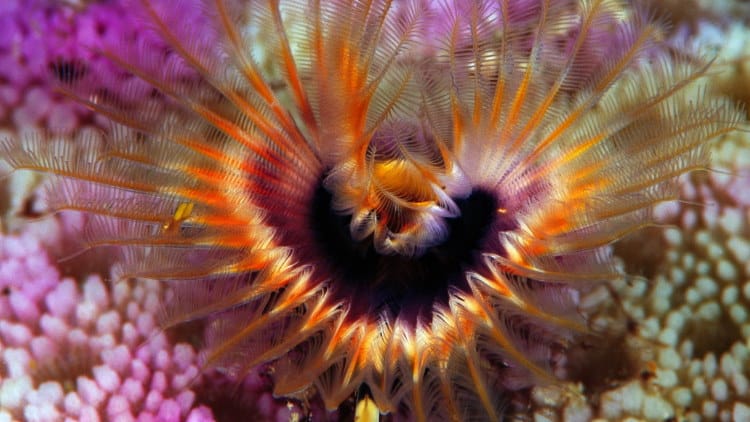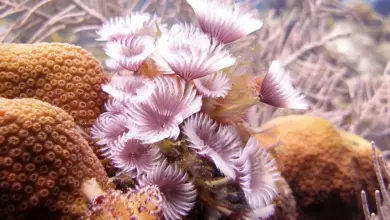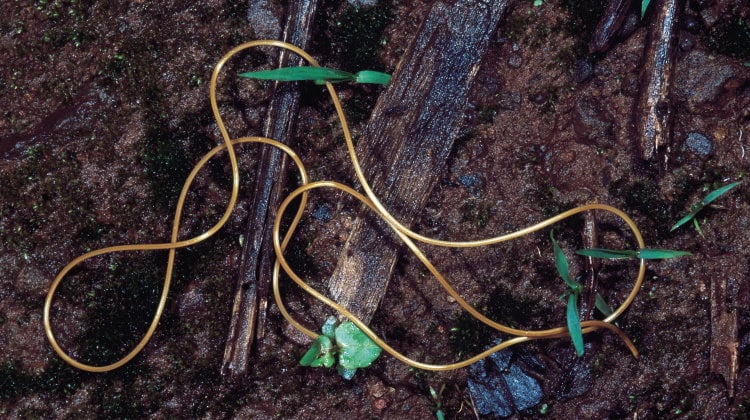Squid: The Ocean’s Fast and Furious
Squid are fast, diverse, colourful, dynamic, intelligent and delicious. According to the Catalogue of life there 298 species of squid, divided between three the orders known to science.
Squid are far more numerous in our oceans than their other cephalopod cousins.
Some squid are so common they support immense fisheries, half a million tonnes of the Pacific Flying Squid Todarodes pacificus were registered as being caught in 2002.
While the aggregated global catch of the 20 most commercially viable species was 2,389,160 tonnes in 2010.
Others species like the Long-arm Squid (Magnapinnidae sp.) are so rare they have only been seen a few times and no adult specimens have ever been collected. It is likely many species, especially in the deeper ocean, remain as yet undiscovered. Earlier this year, June 2021, a paper was published that studied squid that were attracted to illuminated baits at depths over 500 meters down. Among the species observed were two that might turn out to be new species to science.
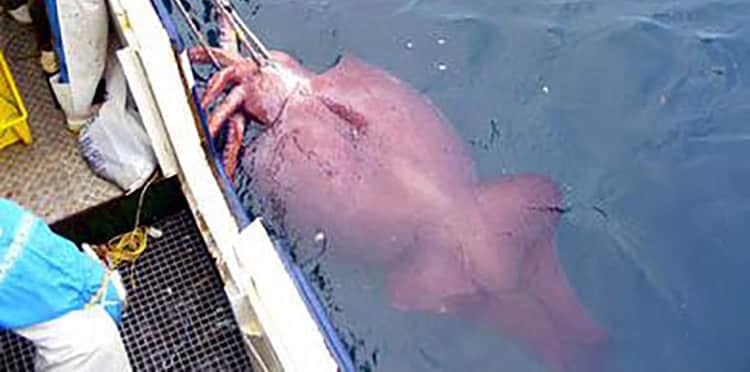
General Introduction
The word squid embraces a range of organisms linked by the possession of two tentacles, eight arms and soft, easily digestible bodies. True squid are found in two orders, the Oegopsida and the Myposida which are characterized by the possession of a long thin, usually transparent internal support (shell) called a gladius. Bobtail squid are poorly named and are actually more closely related to cuttlefish and are not included in this page. Pygmy squid exist in their own family, but the exact relationship they hold to the rest of the Cephalopoda has not been elucidated yet. The ram’s horn squid is a unique animal that I will endeavor to write about separately.
Two Orders
The Myopsida and the Oegopsida are sister groups that are separated by a few well delineated characteristics. Internally the biggest differences are that Oegopsida have only a single ovary, while in the Myopsida the ovaries are paired and that female Oegopsida have accessory nidamental glands, which the female Myopsida do not.. Behaviourally they differ in that the Myopsida, as typified by the genus Loligo, are usually coastal or near coastal and demersal, meaning they feed near the ocean floor. In contrast the Oegopsida, usually represented by the genera Dosidicus and Todarodes, are pelagic, roaming the open ocean, though some species are limited to more shallow water around sea mounts.
External physical differences include the lack of tentacle pockets on the head and differences in the structure of the eyes and the suckers.
Physical Size
Squid range in size from the Giant Squid (Architeuthis dux) with the largest scientifically measured specimen being 14 meters (46ft) in length to the diminutive Thai Bobtailed Squid (Idiosepius thailandicus) whose females are only 1.4 cms (1/2 inch) or less long when fully grown, and whose males are even smaller. Some squid, such as the Long-arm mentioned above appear to live solitarily, while many others live highly aggregated lives. Shoals, or squads of squid can vary from less than 100, to over a thousand in large species such as the Humbolt Squid (Dosidicus gigas). For smaller species such as the Firefly Squid (Watasenia scintillans) known as ‘hotaru-ika’ in Japan where it chiefly occurs the numbers can reach tens of thousands, at least a certain times of year. and for the Opalescent Inshore Squid (Doryteuthis opalescens) even millions during the reproductive season.
Distribution
One species of squid or another occupy the full range of the oceans from tropical climes, the Atlantic Brief Squid (Lolliguncula brevis) through the warm-temperate zones, the Sao Paulo Squid (Doryteuthis sanpaulensis) to the icy poles, Southern Glass Squid (Galiteuthis glacialis). While most commonly found in surface water (down to 200 meters depth) some species live deeper down, Giant squid are commonly found 500 meters to 1,000 meters down and the un-named Magnapinnidae species mentioned above has been observed in the cold and chilly depths of abyssopelagic zone at 4,400 meters.
Sexual Dimorphism
Differences between the genders are common in squid, but usually not excessive. Females are often larger and males have specialized arms that serve to assist spermatophore transfer during mating. In most species only a single arm is modified, but in a few species two arms may be modified. These modified arms are called a hectocotylus. There is considerable variation between species in terms of the form of the hectocotylus.
Colourful Skins
Squid, along with their other coleoid cephalopod cousins, are among the most colourful, and the most dynamically colourful of all the animals living on this planet. Their skins possess both pigmentary and structural colour organelles all of which are, as best we know, under direct neural control. The end result is that squid can put on amazing flashing, rippling, dynamic displays of colour. Scientists are still struggling to understand how squid detect colours, as they have only a single chromatophore in their eyes and would therefore appear to be colourblind. Squid use their colouring abilities to communicate socially, especially during mating.
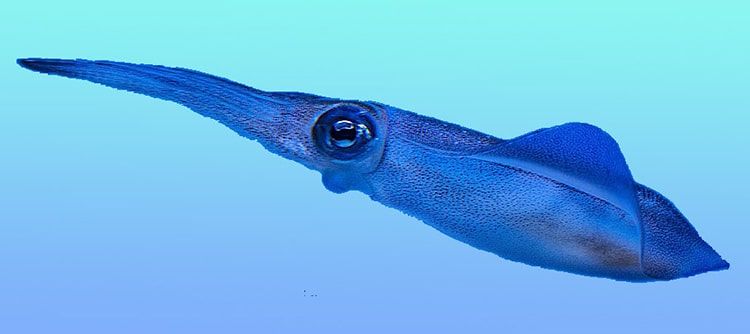
Squid Order Characteristics
| Characteristic | Myopsida | Oegopsida |
|---|---|---|
| Secondary eyelid | No | Yes |
| Corneal membrane | Yes | No |
| Suckers with hooks | No | Sometimes |
| Tentacle pocket | Yes | No |
| Suckers on buccal supports | Yes | No |
| Circular muscles on suckers | Yes | No |
| Oviduct | Paired | Single |
| Accessory nidamental glands | No | Yes |
The Evolution of Squid
Squid are cephalopods, and as such their ancestry, along with that of the nautilus, the cuttlefish and the octopuses stretches back through time 500 million years to late Cambrian era.
Early Days
For the first few hundred million years this lineage (and the sea they lived in, was dominated by shelled creatures, Ammonoids, Belemnoids and Nautiloids (the —-oid ending simply means “large group of creatures like”). Of these tens of thousands of creatures only a few direct descendants remain, the enigmatic Nautiluses of our tropical seas. For the most part externally shelled cephalopods failed to survive the same great extinction that killed off the dinosaurs. However a few species of cephalopod had been experimenting with reducing and internalizing their shells. These creatures were faster and more dynamic than their ancestors and they survived the great destruction. We call them the Coleoid cephalopods.
Dinosaur Times
During the Triassic and the Jurassic, while the dinosaurs ruled the land, species diversity among swimming predators was dominated by the ammonoids and the belemnoids. Some marine dinosaurs existed as in fact did a few fish the evolutionary lines that would become the octopuses (Octobranchia) and the cuttlefish and squid (Decabranchia) which had already separated from other cephalopod branches in the early Permian. Furthermore, molecular clock analysis by Tanner & Fuchs et. al. 2017, suggest squid first separated from the common cuttlefish/squid ancestor about 180 MYA.
Post Dinosaur Developments
However, it was not until after the cretaceous extinction event (which killed off the ammonoids and belemnoids, as well as the non-avian dinosaurs) that both octopuses and squid began to really flourish. At the same time the Actinopterygii (ray-finned fishes), also began to rapidly speciate to occupy the niche-space opportunities left by the extinction of the large shelled cephalopods. Eventually these fish would come to dominate the oceans in terms of species numbers, but the arms race competition between them and the squid would drive both these early opportunistic groups to become the eminently successful creatures we know today.
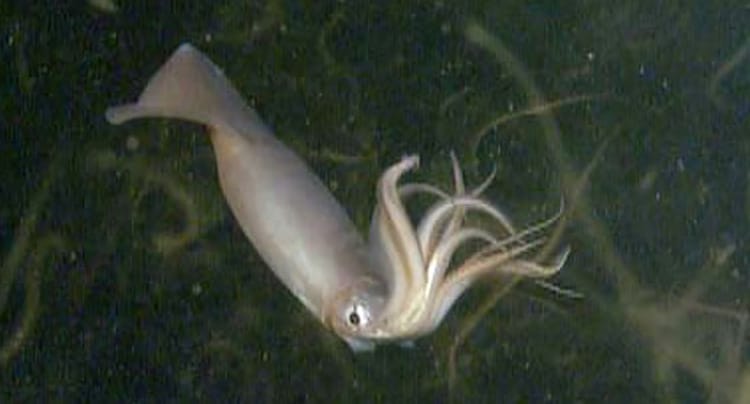
Predators of Squid
Squid are one of the world’s truly excellent food packages. High in protein and other nutrients, low in saturated fats and without scales, bones, feathers or fur/hair they are the perfect lunch on the go for anybody, or any thing, that can catch them. Just about every active predator in the oceans eats squid at some point in its lives. Some animals consume vast quantities of squid, among these great consumers of course is humanity.
Elephant Seals
Elephant seals love squid. In her excellent book “Monarchs of the Sea” Danna Staaf reports on research into the diet of the elephant seal population of South Georgia Island that found that over 95% of what they had eaten recently was squid. They estimated that the entire elephant seal population of the island consumed around 2.2 million metric tonnes of squid a year.
Sperm Whales
Sperm whales are renowned for eating giant squid. However, according to the data in a report on the contents of the stomach’s of sperm whales (from before the whaling moratorium) by Takehiko Kawakami Sperm whales mostly consume smaller species. The report indicates that squid comprise around 95% of an average sperm whale’s diet and that individual whales may consume between 200 and 500 squid per day. In this report the weight of the stomach’s contents is reported to be generally less than 400 kg.
The NOAA website reports that Sperm whales eat about 3% to 3.5% of their body weight per day. This would result in adults eating between 0.42 and 1.43 metric tonnes of squid a day. There is considerable variation here because adult male Sperm whales are three times the size of adult females, by weight.
Humanity
Of course humans love to eat squid as well. According to the 2015 article World Squid Fisheries by Alexander Arkhipkin et. al. around 35 species of squid are commercially important. Possibly driven by overfishing of the ocean’s fishes, squid catches have been generally increasing since the end of the 1990s. In 2012 the global catch of commercial squid was 4.3 million tonnes.
Parasites of Squid
In General
Like all living organisms squid living in the wild are effected by parasites. These parasites infect various different parts of the body, from the skin, through the gills to the digestive tract and renal organs. While parasite diversity is not often reported on in general sources, many scientific studies have reported on parasites in cephalopods. These reports are inevitably dominated by research into commercially important species.
A considerable amount of information was made available in a very useful review paper titled “Global patterns of parasite diversity in cephalopods” published in 2020 by Tedesco, Bevilacqua, Fiorito & Terlizzi. Browsing this report we can see that over 300 different parasites have been recorded in and on the bodies of cephalopods. Some specimens studied have been suffering much more than others, with the maximum number of parasite found any given individual being 42.
One of the interesting things to come out of the above research is that over the last 200 years the species of parasites that affect squid has been changing with some species apparently disappearing and other new species taking their place.
Specifically Squid
Focusing on squid it appears that the most frequent group of parasites are Platyhelminths and then Nematodes. Other important groups include Annelids, Arthropods, Dicyemida and the Protozoan groups Ciliophora and Myzozoa. Between the two main groups of squid, Myopsids (mostly coastal) and Oegopsids (mostly open water) there are some differences in infection rates. For example Myopsids suffer from Annelids, Dicyemids and Monogeneans while Oegopsids apparently don’t. In opposition to this Oegopsids suffer from Acanthocephalans and Protozoans and Myopsids don’t. Furthermore Nematodes and Chromistans are more of a problem for Oegopsids while Crustaceans and Digeneans occur more frequently in Myopsids, (Roumbedakis et. al. 2018)
Some parasites are specialists and others are generalists. The Cestode Platyhelminth (Scolex pleuronectis) infects 38 different species of cephalopods such as the colourful Rainbow Flying Squid (Ornmastrephes bartromii) and the large the Humbolt Squid (Dosidicus gigas). The next most frequently observed parasite in squid is the Nematode Anisakis simplex which makes use of 22 different cephalopod hosts including the Japanese Flying Squid (Todorodes pacificus) and the Wellington Flying Squid (Nototodarus sloanii) Other Platyhelminthes parasites’ found in squid include the Monogenean (Isancistrum loliginis) in the mantle cavity and gills of the Common European Squid (Alloteuthis subulata)
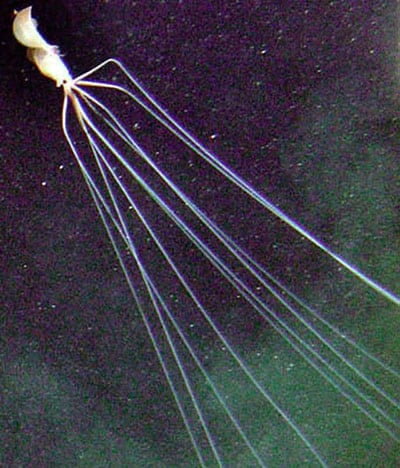
What do Squid Eat??
As hatchlings most squid are part of the zooplankton and quite naturally they feed on other members of the zooplankton. As they grow most squids are dynamic and opportunistic predators, often taking relatively large prey items particularly fish. Pelagic crustaceans are important in the diet of many pelagic species during their early development.
As they grow their diet expands to include many organisms that a little while ago were feeding on their peers. Fish are the dominant source of food for most adult species. Other squid, even members of their own species (cannibalism), also supply an important part of their regular diet. In some gonatid species reported on in a study published in 2016 cannibalism was common, particularly for Gonatus onyx with conspecifics accounting for 42% of this species observed diet.
Squid Lifecycles
Most squid have not been fully studied, and naturally enough those species which are commercially valuable have been studied in greater depth than those which are not so valuable. Therefore the information presented here is biased in favour of those few well studied species and generalizations thus made may prove to be less general as greater knowledge of of currently less well known species is acquired.
Live fast, play hard and die quickly (all of course relatively speaking). Many species of squid have life cycles that are completed in a single year and most live less than three years. Larger pelagic species tend to have longer lifecycles than smaller benthic or coastal species see table below. Pygmy and Bobtaill squid lifecycles are the shortest of all, with some lasting barely six months.
Squid are schooling organisms. In comparison octopuses are almost entirely solitary throughout their lives and cuttlefish, while they do tend to live in dispersed aggregations do not usually school in the way that squid and many fish do.
Reproductive Biology in Squid
Squid have evolved in constant competition with fish, especially schooling fish. They have become fast and streamlined, travelling the oceans in often vast schools that compete with the equally vast schools of pelagic fish. However even though both groups produce far more eggs/young than could viably grow to maturity in a limited environment they differ in their reproductive strategies.
Most squid are semelparous, experiencing only a single reproductive season before they die whereas most fish are iteroparous, meaning they will live long enough to go through several, or even many reproductive acts. I say most fish because obviously some fish, such as the renowned salmon, are obviously semelparous as well. The difference here is that a salmon takes many years to reach maturity whereas most squid do so in one or two years.
Mating is highly variable and may or may not be preceded by a brief, or a more extended courtship. During the actually mating the squid are often head to head with their arms entangled. During this time the male will transfer a packet of sperm, called a spermatophore to the female’s body. He does this using his hectocotylus, a specially modified arm. Quite where the spermatophore ends up depends on the individual species. some females have special pouches near their eyes or mouth to receive the spermatophore, in other species it is deposited directly into the mantle cavity.
Spawning Time
Some species of squid only spawn at one certain time of the year when all the populations come together for a single spawning period, for example the Firefly Squid (Watasenia scintillans). Others appear to form spawning aggregations throughout the year as individuals of different populations become sexually mature, but these may be more common, or involve more individuals in certain seasons.
For species with larger distribution it becomes more likely that populations will become semi-isolated and spawn in different locations and sometimes at different times of year. Thus the northern and southern southern populations of and of the Humboldt Squid (Dosidicus gigas) have slightly asynchronous peaks in their extended breeding. Furthermore the Japanese Flying Squid (Todarodes pacificus) is divided into three distinct subpopulations each of which as a different peak spawning season, one in summer, one in autumn and the third in winter.
Water Temperature and Spawning in Squid
Squid may spawn at any time of year, and even within a single species different populations may spawn at different times of year. Populations of Illex argentinus off the coasts of S. America appear to be limited in their spawning areas to locations where the water temperature is higher 12 degrees C, meaning spawning sites are ‘thermally constrained’.
In fact water temperatures appear to play a major role in where squid populations can be found throughout their life cycle. Squid are highly mobile animals, and many are definitively migratory, travelling set routes away from their spawning grounds as they grow and only returning to these areas once they are mature and ready to spawn themselves. Within this scheme of things year on year catches of a given species in a given area can be highly variable. Research into this variability for squid populations around the Falkland Islands has demonstrated that about 40% of this variability can be explained as a result of differences in sea surface temperatures in the spawning grounds (Anderson and Rodhouse 2001).
Egg Deposition in Squid
There are major differences in the way the two big families of squids deposit their eggs. Mostly the demersal Myopsids lay their eggs in egg cases (which usually contain two to six eggs per case) in spherical bundles attached to some object (biotic or abiotic) near the sea floor. A given individual my lay many cases, not necessarily all in the same egg mass, and different individuals will contribute to any given egg mass.
In contrast the pelagic Oegopsids tend to produce spherical gelatinous masses that float in the open ocean at various depths. These egg masses also contain egg cases each contai9ning a small number of eggs. Much less is known about Oegopsid egg laying and the few observations that have been made (mostly on Humboldt squid) indicate that even within a given species there is considerable variability.
For Every Rule There Are Exceptions
Within the Oegopsids there are also several anomalous species. The subfamily Enoploteuthinae, contains about eight species, all known from around Hawaii. These species are unique in that the females do not possess any nidamental glands and are thought to lay their eggs singly in the open ocean.
Also within the Oegopsidae, in the family Gonatidae, is the Black-eyed Squid Gonatus onyx. This is a deep water species in which the females retreat to depths of 1,500 to 2,500 meters (5,000 to 7,000 ft) after spawning. It is the only species of squid known to brood its eggs. Females of the species carry their eggs around with them in a globular mass between their arms, suspended from special ‘hooks’ on their tentacles. Presumably, like female octopuses, they do not eat during the egg maturation process.

The Story of Squid Giant Axons
In the right eyes squid may be said to have many claims to fame, just one of these is their giant axons. Note that this is the axons that are giant not necessarily the squid, even small species of squid have them. In fact squid are not unique in having giant axons, their cousins the cuttlefish have some as do some crayfish (Crustacea) and cockroaches (Insecta) among others. Giant axons are obviously not all the same size, an axon is considered to be a giant axon when it is far, far larger (in diameter) than the organisms other axons, usually at least an order of magnitude (x time) larger.
What Are Giant Axons
The diameter of an axon controls the speed at which it transmits it electrical message. The greater the diameter of the axon, the faster it is. Giant axons have evolved in animals that need very quick, virtually instant, muscular responses in order to survive. Giant axons have evolved in three different forms in different groups. Unicellular = composed of a single cell grown larger as in cockroaches; Multicellular – syncytial = composes of a number of cells that have fused together to become effectively one cell, as in squid; Multicellular – segmental = composed of a series of cells arranged in consecutively – they have special fast transfer junctions as in crayfish.
Scientific Discovery
While scientists now know that giant axons occur in many species this was not always the case. The giant axons of squid, which can be made up of 300 to 500 fused cells, were the first giant axons ever discovered. They were first reported on in the common squid (Loligo pealii) by the American L. W. Williams in 1909, but did not become part of the scientific world until rediscovered by the English physiologist J. Z. Young, who not only observed them in situ, but experimented on them in 1930.
Since then they have become famous because their much greater size has made the studying them and working with them much easier for scientists. We now know that nerves work because of the action potential set up between the positive potassium ions inside the axon and the negative sodium ions outside the axon. This knowledge was made possible by work done on squid giant axons and has been fundamental in expanding our understanding of how animal nervous systems work.
The Kraken – Monster From The Depths (of the human mind).
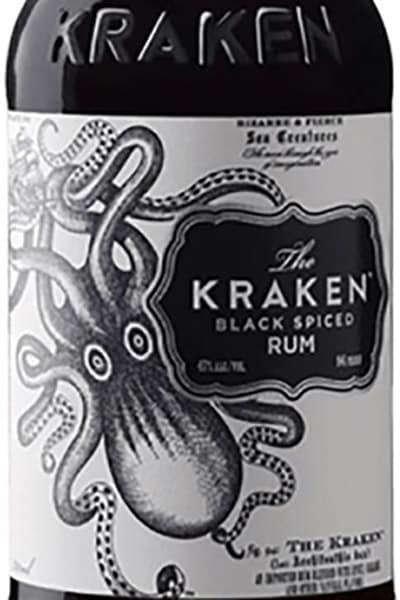
Is the kraken a giant squid or a giant octopus? Actually this is the wrong question, because ‘The Kraken’ per se, does not exist. A question we can scientifically ask is – Was the creature that inspired the legends of the kraken a squid or an octopus. The answer is we don’t know, and we may never know. The legend of the Kraken arose in northwestern Europe when Norse sailors reported seeing them between Norway and Greenland in the 1700s, so it isn’t really an ancient myth.
The kraken, as reported is definitely a cephalopod, but early drawing are variable and not conclusive as to which group it should be in. Not really surprising as they originated in the human imagination and not from actual sightings. The kraken is reported to have been immense, capable of dragging a sailing ship of those days down into the ocean in order to extract and feed on the precious human flesh. Personally I feel it was more likely inspired by the Giant Squid as reported on in the Cephalopod front page here at Earthlife. However I couldn’t defend this idea intellectually.
The Kraken Is Now A Part of Our Culture
Regardless of it’s non-existence, like Yorick, the kraken has become a part of our shared cultural heritage because authors and film makers love a good monster and the kraken is one of the best – so nearly real – you can almost believe.
In fact, it is so much a party of our culture that there is a brand of Caribbean Black Spiced Rum, available in both the USA and Europe called The Kraken. The label states that the Latin name for the kraken is Architeuthis dux, and the image on the label is a drawing of a Giant Squid.
Finally Kraken is the name of a major US cryptocurrency exchange and bank. Founded in 2011 it now offers services to residents of 48 US states and 176 countries while listing 72 different cryptocurrencies. It might be said to have lived up to its original naming as it is a many armed/tentacled beast these days.
The Kraken in Literature
Alfred Lord Tennyson’s poem, named The Kraken is the earliest truly literary mention of the kraken that I know of, and as Tennyson is one of my heroes I have included the whole poem here. Following this Herman Melville includes an immense beast called ‘The Great Live Squid’ in his 1851 novel Moby Dick, and then Jules Verne mentions both the kraken and giant squid in his1870 novel Twenty Thousand Leagues Under the Sea (originally in French) which results in them appearing in every film made of this classic novel ever since. From thereon in kraken occur with increasing frequency and too often for me to list them all here. Some of my more modern favourites are China Miéville’s 2010 novel “Kraken” which includes a cult devoted to the worshiping the kraken and the fact that in George R. R. Martin’s “A Song of Ice and Fire” the House Greyjoy of Pyke has a golden kraken as its sigil. Finally in “Lord of The Rings” by Tolkein, the ‘Watcher at the Gate’ while not marine, is very kraken like.
The Kraken By Alfred Lord Tennyson 1830
Below the thunders of the upper deep,
Far, far beneath in the abysmal sea,
His ancient, dreamless, uninvaded sleep
The Kraken sleepeth: faintest sunlights flee
About his shadowy sides; above him swell
Huge sponges of millennial growth and height;
And far away into the sickly light,
From many a wondrous grot and secret cell
Unnumbered and enormous polypi
Winnow with giant arms the slumbering green.
There hath he lain for ages, and will lie
Battening upon huge sea worms in his sleep,
Until the latter fire shall heat the deep;
Then once by man and angels to be seen,
In roaring he shall rise and on the surface die.
The Kraken in Film
The first film to feature a kraken was called “Under the Seas” and it was released in 1906. In this film the ‘kraken’ was definitely an octopus. Following this kraken, or kraken like creatures, regularly featured in marine based horror films. In 1962 the kraken was one of a series of monsters defeated by the protagonist in “Jack The Giant Killer“. More recently a creature called ‘the kraken’ has featured in both the 1981 and 2010 versions of “Clash of The Titans” although it underwent some impressive evolution between versions.
In the animated 2003 Sci Fi film “Atlantis: Milo’s Return” the kraken possesses telepathic powers. The kraken also appears in two Pirates of the Caribbean’ films, “Dead Man’s Chest” and “At World’s End”, although in the latter it is dead and washed up on the shore. Most recently a kraken of sorts has featured in the 2018 animated film “Hotel Transylvania 3: Summer Vacation”.
Squid and Humanity

The importance of squid to humanity is growing rapidly as many fish stocks are becoming over-fished and depleted, while humanity’s population continues to increase. According to some research the economic value of squid fisheries will exceed 11.5 billion us dollars by 2025.
The Roman historian Pliny mentions squid several times in his “Naturalis Historia” in books IX, XI, XVIII & XXXII. The Latin name for squid is lolligo and Pliny has several thoughts about the portentious nature of squid seen flying. in particular that they forecast storms or bad weather and that they sink ships.
Squid in Fiction
One of the earliest western occurrences of squid in fiction is often cited as the pack of Giant Squid that attack the Nautilus in Jules Verne’s “20,000 Leagues Beneath the Sea” stories of 1869/1870. However, despite later imagery, and the idea of the animal travelling in a pack (like the Humbolt Squid), Verne’s original French names the animals as “poulpes’ which definitely means octopus, not squid.
In November 2014 the Kindle edition of “The Giant Squid presents A Tahitian Tale: Chronicles of the Giant Squid – Volume 1” was published by D. E. Nelson et. al.
Giant Space Squid, and lesser sized Space Squid have proven popular for decades. In the last episode of the 2002 series of Courage The Cowardly Dog “Last of The Starmakers” Giant Space Squid reveal themselves to earthlings. The idea soon found its way into the Brewster Rockit Universe where sapient Space Squid manifested in August 2004 to be rapidly followed by Giant Purple, or sometimes Giant Green Space Squid in December 2004 and in animation in 2010.
Other Examples of Squid Fame
In November 2018 Waterflame released a piece of music called Giant Space-Squid.
The Japanese Flying Squid, Todarodes pacificus was featured on the Russian 90 ruble stamp in1993.
Squids in Space:- In June 2021 NASA sent some baby Hawaiian Bob-tailed Squid up to the international Space Station for study, along with some Tardigrades and other small creatures. They departed at 17:29 GMT (13:29 EDT) June the 3rd and travelled by Space X’s Falcon 9 rocket.
Squiddly Diddly was a charming cartoon character who was part of my childhood TV. However he was obviously an octopus, so I will say no more about him now.
Squid Game
In the second half of 2021 HBOs TV Show Squid Game hypnotized millions innocent humans (it has been suggested the show captures the souls of addicts and transmits them into the depths of the ocean to feed giant squid) but I personally don’t believe a word of it. Nevertheless the internet of late 2021 and beyond is awash with theories, and ravings that don’t really justify being called theories, about the shows’ inhouse philosophy and spiritual reality. Watch it if you dare.
Following on from the above South Korean Netflix hit Squid Game in mid 2021 a new play-to-earn cryptocurrency called “Squid” was launched. In less than a week it’s value soared to $2856 per coin. In even less time it was worth nothing, well 1 cent per coin. Like the mythical kraken it had come from nowhere and dragged a shipload of people down. It was apparently a type of scam known as a ‘rug pull‘ and the creators made of with $3.38m of drowned investors money.
Taxonomy and Classification of Squid
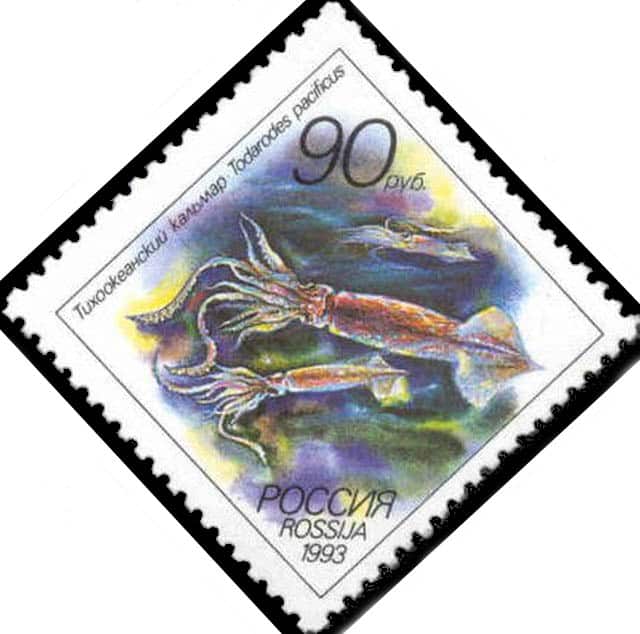
Class Cephalopoda
- Order Myopsida • 49 living spp
- Family Australiteuthidae • 1 living spp
- Genus Australiteuthis • 1 living spp
- Family Loliginidae • 48 living spp
- Genus Afrololigo • 1 living spp
- Genus Alloteuthis • 3 living spp
- Genus Doryteuthis • 8 living spp
- Genus Heterololigo • 1 living spp
- Genus Loligo • 3 living spp
- Genus Loliolus • 6 living spp
- Genus Lolliguncula • 5 living spp
- Genus Pickfordiateuthis • 3 living spp
- Genus Sepioteuthis • 3 living spp
- Genus Uroteuthis • 15 living sp
- Family Australiteuthidae • 1 living spp
- Order Oegopsida • 248 living spp
- Family Ancistrocheiridae • 1 living spp
- Genus Ancistrocheirus • 1 living spp
- Family Architeuthidae • 1 living spp
- Genus Architeuthis • 1 living spp
- Family Batoteuthidae • 1 living spp
- Genus Batoteuthis • 1 living spp
- Family Brachioteuthidae • 7 living spp
- Genus Brachioteuthis • 6 living spp
- Genus Slosarczykovia • 1 living spp
- Family Chiroteuthidae • 17 living spp
- Genus Asperoteuthis • 3 living spp
- Genus Chiroteuthis • 7 living spp
- Genus Grimalditeuthis • 1 living spp
- Genus Planctoteuthis • 5 living spp
- Genus Valbyteuthis • 1 living spp
- Family Cranchiidae • 35 living spp
- Genus Bathothauma • 1 living spp
- Genus Cranchia • 1 living spp
- Genus Egea • 1 living spp
- Genus Enigmocranchia • 1 living spp
- Genus Galiteuthis • 5 living spp
- Genus Helicocranchia • 3 living spp
- Genus Leachia • 8 living spp
- Genus Liguriella • 1 living spp
- Genus Liocranchia • 2 living spp
- Genus Megalocranchia • 3 living spp
- Genus Mesonychoteuthis • 1 living spp
- Genus Parateuthis • 1 living spp
- Genus Sandalops • 1 living spp
- Genus Taonius • 3 living spp
- Genus Teuthowenia • 3 living spp
- Family Cycloteuthidae • 4 living spp
- Genus Cycloteuthis • 2 living spp
- Genus Discoteuthis • 2 living spp
- Family Enoploteuthidae • 43 living spp
- Genus Abralia • 20 living spp
- Genus Abraliopsis • 11 living spp
- Genus Enoploteuthis • 11 living spp
- Genus Watasenia • 1 living spp
- Family Gonatidae • 19 living spp
- Genus Berryteuthis • 2 living spp
- Genus Gonatopsis • 5 living spp
- Genus Gonatus • 12 living spp
- Family Histioteuthidae • 18 living spp
- Genus Histioteuthis • 15 living spp
- Genus Stigmatoteuthis • 3 living spp
- Family Joubiniteuthidae • 1 living spp
- Genus Joubiniteuthis • 1 living spp
- Family Lepidoteuthidae • 1 living spp
- Genus Lepidoteuthis • 1 living spp
- Family Lycoteuthidae • 6 living spp
- Genus Lampadioteuthis • 1 living spp
- Genus Lycoteuthis • 2 living spp
- Genus Nematolampas • 2 living spp
- Genus Selenoteuthis • 1 living spp
- Family Magnapinnidae • 3 living spp
- Genus Magnapinna • 3 living spp
- Family Mastigoteuthidae • 16 living spp
- Genus Echinoteuthis • 3 living spp
- Genus Idioteuthis • 1 living spp
- Genus Magnoteuthis • 3 living spp
- Genus Mastigopsis • 1 living spp
- Genus Mastigoteuthis • 7 living spp
- Genus Mastigotragus • 1 living spp
- Family Neoteuthidae • 4 living spp
- Genus Alluroteuthis • 1 living spp
- Genus Narrowteuthis • 1 living spp
- Genus Neoteuthis • 1 living spp
- Genus Nototeuthis • 1 living spp
- Family Octopoteuthidae • 8 living spp
- Genus Octopoteuthis • 7 living spp
- Genus Taningia • 1 living spp
- Family Ommastrephidae • 22 living spp
- Genus Dosidicus • 1 living spp
- Genus Eucleoteuthis • 1 living spp
- Genus Hyaloteuthis • 1 living spp
- Genus Illex • 4 living spp
- Genus Martialia • 1 living spp
- Genus Nototodarus • 3 living spp
- Genus Ommastrephes • 1 living spp
- Genus Ornithoteuthis • 2 living spp
- Genus Sthenoteuthis • 2 living spp
- Genus Todarodes • 5 living spp
- Genus Todaropsis • 1 living spp
- Family Onychoteuthidae • 27 living spp
- Genus Ancistroteuthis • 1 living spp
- Genus Filippovia • 1 living spp
- Genus Kondakovia • 2 living spp
- Genus Notonykia • 2 living spp
- Genus Onychoteuthis • 10 living spp
- Genus Onykia • 7 living spp
- Genus Walvisteuthis • 4 living spp
- Family Pholidoteuthidae • 2 living spp
- Genus Pholidoteuthis • 2 living spp
- Family Promachoteuthidae • 3 living spp
- Genus Promachoteuthis • 3 living spp
- Family Psychroteuthidae • 1 living spp
- Genus Psychroteuthis • 1 living spp
- Family Pyroteuthidae • 7 living spp
- Genus Pterygioteuthis • 4 living spp
- Genus Pyroteuthis • 3 living spp
- Family Thysanoteuthidae • 1 living spp
- Genus Thysanoteuthis • 1 living spp
- Family Ancistrocheiridae • 1 living spp
Image Credits:- Cover Image Sepioteuthis sepioidea by Nik Hobgood License CC BY-SA 3.0; Bigfin Reef Squid by Rhododendrites; License CC BY-SA 4.0; Watasenia scintillans adapted from Circe Denyer, Long-arm Squid and Humboldt Squid NOAA – Public Domain

